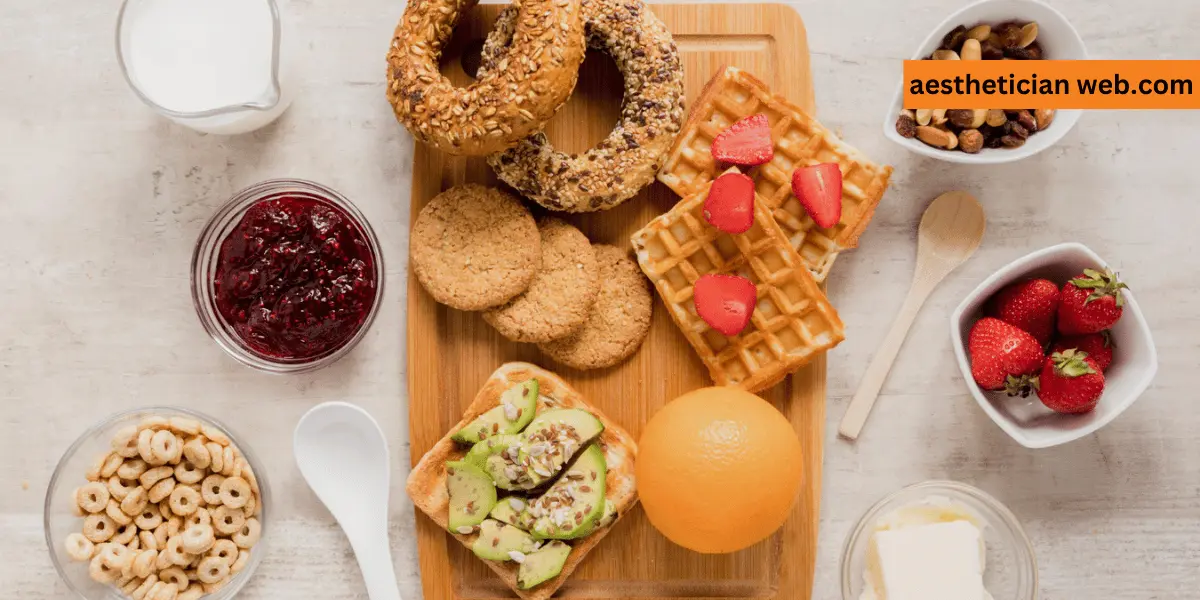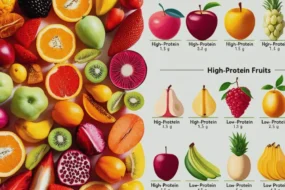
As a busy mom balancing a demanding career and family life, ensuring your teenagers get the nutrients they need for growth and development can feel like an uphill battle—especially if they gravitate toward carbohydrate-heavy foods like bread, pasta, and crackers.
While encouraging them to eat more protein-rich foods such as poultry, legumes, nuts, and dairy may seem challenging, it’s vital for their health. In this article, I’ll share practical, time-saving tips to create quick, nutritious meals and snacks your teens will enjoy.
These ideas will help you introduce various high-protein options into your family’s diet, effortlessly blending health with the busy pace of your life. Say goodbye to mealtime struggles and hello to healthy habits your whole family can embrace.
High Protein Foods for Picky Eaters
Picky eaters can enjoy high-protein options like yogurt with wholegrain crackers, homemade chicken nuggets, and peanut butter with fruits or celery sticks. Incorporating these foods into kid-friendly meals, such as tacos and smoothies, can help them meet their protein needs without resistance.
What is Protein?
Protein is an essential macronutrient of over 20 amino acids, each playing a unique role in supporting the daily functioning of our cells and bodies. This nutrient is vital for both children and adults, aiding in:
- Growth and development.
- Repair of muscles and tissues.
- Overall health and energy levels.
The Challenge with Picky Eaters
While a typical Western diet provides more than enough protein for most, ensuring your picky teenagers consume sufficient high-quality proteins can be tricky.
Proteins containing essential amino acids are crucial for healthy development, but selective eaters may resist these unless introduced creatively and approachable.
One approach is incorporating Vegetables For Picky Eaters into meals with high-quality protein sources. Pairing vegetables with protein-rich foods like eggs, cheese, or nut butter can make these meals more appealing and nutritionally balanced.
Balancing Nutrition with a Busy Lifestyle
As a busy mom juggling a demanding career and family life, incorporating protein into meals strategically is key. Focus on:
- Choosing simple, high-quality protein options that appeal to teenagers.
- Preparing meals that align with their preferences without compromising nutrition.
- Using creative approaches to “sneak in” essential proteins, such as blending them into smoothies or pairing them with flavorful Vegetables in soups and stir-fries.
Why do Kids Need Protein?
Protein is an essential nutrient that supports your teenager’s growth, development, and overall well-being. Its importance spans across multiple aspects of health and daily functioning, including:
Key Roles of Protein
- Muscle and Tissue Repair: Facilitates the repair and growth of muscles and tissues, critical during adolescence.
- Immune System Support: Strengthens the immune system, keeping your teen resilient against illnesses.
- Sustained Energy Levels: Provides the stamina to power through their busy days.
- Enhanced Focus: Protein-rich meals help boost concentration, which is vital for academics and extracurriculars.
- Improved Memory: Supports brain function, aiding in retaining and recalling information.
- Better Academic Performance: Promotes mental clarity and sustained focus, which are crucial during study sessions and exams.
- More extended Fullness: Protein helps them feel full longer, reducing cravings and the urge to snack on unhealthy foods.
- Better Nutrition: Encourages a balanced diet by minimizing the temptation for junk food.
- Easy Protein-Rich Meals: Incorporate simple, high-protein options like eggs, yogurt, lean meats, tofu, or legumes into your daily routine.
- Meal Prep Ideas: Prepare meals in advance to save time while ensuring your family eats healthily.
Supplements for Added Benefits
- Ashwagandha for Immunity and Development: This supplement can bolster your teen’s immunity and overall growth, providing additional support during their developmental years.
For more tips and insights, explore how the benefits of Ashwagandha can contribute to your children’s health.
Protein Requirements for Kids
Protein is essential for children’s growth, muscle development, and overall health, making it a critical focus for any mom managing a busy household. It supports muscle repair, boosts immune function, and helps maintain steady energy levels throughout the day.
Understanding Protein Needs by Age
While picky eaters can present challenges, meeting their daily protein requirements is achievable with some planning. Here’s a quick guide to protein needs based on age and weight:
- 7–12 Months:
Need: 14 grams/day (approximately 1.6 g/kg of body weight).
- 1–3 Years:
Need: 14 grams/day (around 1.08 g/kg of body weight).
- 4–8 Years:
Need: 20 grams/day (roughly 0.91 g/kg of body weight).
Easy Protein-Packed Foods for Picky Eaters
While these numbers may seem overwhelming, incorporating protein into meals doesn’t have to be complicated. Here are some kid-friendly, nutritious options:
- Eggs: Scrambled, boiled, or added to baked goods.
- Greek Yogurt: A versatile option for breakfast or snacks.
- Nut Butter: Pair with apple slices, celery sticks, or whole-grain toast.
Quick Tips
As a time-strapped mom juggling work and family, here’s how you can simplify meal prep while ensuring your kids get enough protein:
- Prep in advance: Boil eggs or portion out yogurt for grab-and-go options.
- Hide protein in favorites: Blend nut butter into smoothies or add Greek yogurt to pancakes.
- Opt for convenience: Choose high-protein snacks that fit your schedule and your kids’ tastes.
Making nutrition a priority for your family doesn’t have to feel like an uphill battle. With minor adjustments, you can create healthy, protein-rich meals that support your children’s growth and development while working around your busy life.
Amount of Protein in Common Foods and Drinks
In a typical Western diet, many common foods offer a considerable amount of protein to meet the needs of both kids and toddlers. Below is a table showing the protein content of various foods and drinks commonly consumed:
| Food/Drink | Protein Amount | Serving Size |
| Milk | 8g | 250ml cup |
| Yoghurt | 7g | 1/2 cup |
| Cheese | 6g | 25g slice |
| Meat, Poultry, Fish | 8g | 30g serve |
| Eggs | 6g | 1 egg |
| Tofu | 8g | 100g |
| Beans (Chickpeas, Lentils, Kidney Beans, Green Peas) | 3g | 1/4 cup cooked |
| Seeds (Chia, Sesame) | 3g | 1 tablespoon |
| Wholegrain Bread | 4-6g | 1 slice |
| White Bread | 2g | 1 slice |
| Pasta (White, Whole Wheat) | 2g | 1/4 cup cooked |
| Nut Butter | 5g | 1 tablespoon |
| Oats | 3.8g | 30g uncooked |
Creative High-Protein Meal Ideas for Picky Eaters
Finding high-protein foods for picky eaters can feel like a daily struggle, especially for professionals juggling demanding careers and family responsibilities.
As a health-conscious mom, ensuring your child meets their protein needs might feel disheartening when traditional meals are met with resistance. But don’t worry—plenty of creative, easy-to-prepare options can simplify this challenge while aligning with your busy lifestyle.
Breakfast Ideas for Busy Families
Start your mornings with convenient, protein-packed choices that even picky eaters might enjoy:
- Low-Sugar Yogurt with Wholegrain Cereal or Porridge: To make it more appealing while sneaking in protein and fiber, add a drizzle of honey or fresh fruit.
- Nut Butter Toppings: Spread almond or peanut butter on toast or swirl it into oatmeal for a quick boost of protein and healthy fats.
- Egg-Based Options: Try boiled eggs with toast soldiers or even mini egg muffins prepped ahead for grab-and-go mornings.
- Baked Beans on Toast: A classic yet underrated, fun, filling, and protein-rich option.
Lunch and Dinner Ideas for Picky Eaters
Finding the middle ground with picky eaters at lunch and dinner can be challenging, especially for busy professionals managing demanding schedules. With a few creative tweaks, you can serve protein-rich meals that satisfy taste and nutrition without requiring hours in the kitchen.
- DIY Burgers: Make your burgers using beef patties and fun fillings like cheese or veggies. Customize them to include hidden healthy ingredients while keeping the meal exciting.
- Homemade Chicken Nuggets or Fish Fingers: Skip the store-bought versions and make these at home with simple, wholesome ingredients for a high-protein twist.
- Macaroni and Cheese with a Protein Boost: Add legumes like lentils or chickpeas to macaroni and cheese for extra protein and fiber. This quick fix is great for busy weeknights.
- Tacos and Quesadillas: Fill these with chicken, cheese, and fresh veggies for a satisfying, balanced meal. They’re easy to customize for individual preferences.
- Bone Broth Pasta: Cooking pasta in bone broth adds approximately 10g of protein per cup. It’s an effortless way to increase nutrient intake without changing the dish’s flavor.
- Simple Soups: Serve chicken noodle soup or enhance instant noodles with butter and protein-rich toppings like shredded chicken or tofu.

High Protein Snack Ideas for Picky Eaters
If you have a picky eater at home, finding snack ideas that are both tasty and nutritious can be tricky. Luckily, plenty of simple options pack a good amount of protein.
- Greek Yogurt and Wholegrain Crackers: Pair plain or lightly sweetened Greek yogurt with wholegrain crackers. It’s a quick, high-protein option that even picky eaters can enjoy.
- Cheese and Crackers: A simple, filling snack that provides protein and is easy to pack for busy afternoons.
- Banana or Apple Slices with Peanut Butter: This sweet and satisfying combination offers protein, healthy fats, and fiber, making it a perfect on-the-go snack.
- Hummus with Veggie Sticks or Crackers: A creative and colorful option with protein that encourages kids to eat more vegetables.
- Protein-Rich Smoothies: Blend milk, yogurt, fruit, and a bit of nut butter for a snack that’s both nutritious and fun for kids.
- Mini Frittatas or Bliss Balls: These can be prepped in advance for convenient, bite-sized snacks that are easy to grab on a busy day.
- Chia Pudding: A delicious and customizable option that can be made ahead with milk, chia seeds, and your child’s favorite toppings.
- Roasted Chickpeas or Fava Beans: Crunchy, protein-packed snacks perfect for curbing hunger between meals.
- Cottage Cheese Dips: Serve cottage cheese with crackers or veggie sticks for a nutritious snack rich in vitamins, minerals, and protein.
Should I Give my Child Protein Powder?
Protein powders are rapidly becoming a prominent market, with products specifically targeting children. However, as a busy parent striving for health-conscious decisions, it’s essential to understand whether they are necessary for your child.
Balanced Diet vs. Protein Supplements
In most cases, kids who eat a reasonably balanced diet—including foods from the five food groups—naturally meet their protein needs. Children only require two to three times the amount of protein found in a typical meal made with natural ingredients, making protein supplements unnecessary for most healthy kids.
The Reality of Protein Powders for Kids
While some powders can provide around 12g of protein per serving—about half the recommended amount for children aged 4-8—they often come with potential drawbacks:
- Added Sugars: Many protein powders contain sugar, which can contribute to dental issues.
- Artificial Sweeteners can upset sensitive stomachs and may not align with your family’s wellness values.
The Best Approach: Real Food
Focusing on whole, natural foods is always the best strategy for meeting protein needs. Lean meats, eggs, dairy, beans, and nuts are excellent protein sources and provide essential vitamins and minerals. Supplements should only be considered under the recommendation of a healthcare professional.
FAQ’s
Q: How to Eat a Lot of Protein as a Picky Eater?
To help your kids eat more protein-rich foods, try mixing animal products like salmon, fish sticks, and turkey lunch meat into their meals.
You can also include yogurt, mozzarella, and string cheese for snacks. For variety, add beans or grains and try soy products like tofu or soy chicken nuggets. Sneaking in veggies can also make meals healthier and tastier.
Q: What Food is Full of Protein?
Protein-rich foods include eggs and dairy products like milk, yogurt, and cheese. Nuts and seeds such as almonds, pumpkin, and sunflower seeds are also high in protein. Legumes like beans, lentils, and tofu are excellent protein sources for picky eaters.
Q: What are 4 Important Tips for Eating Protein?
To eat more protein, try these four tips. First, enjoy a snack like peanut butter or nut butter spread on apple or celery slices with whole grain crackers. Second, add seafood or lean meat to your meals for extra protein—third, mix beans, peas, or lentils into salads or sides. Finally, be creative with your meals and snacks to keep things fun and tasty.
Conclusion
In conclusion, ensuring picky eaters get enough protein can be a rewarding challenge for parents. You can help your child meet their nutritional needs without a fuss by creatively incorporating high-protein foods into meals and snacks.
Remember to focus on variety and balance in their diet, introducing new foods gradually and in ways they enjoy. With patience and some fun meal ideas, you can turn mealtime into an opportunity for healthy growth and discovery, setting your child up for a strong and vibrant future.
I’m Ayesha Zahid, a certified Nutritionist and Dietitian with over 3 years of hands-on experience helping individuals and families improve their health through nutrition.




